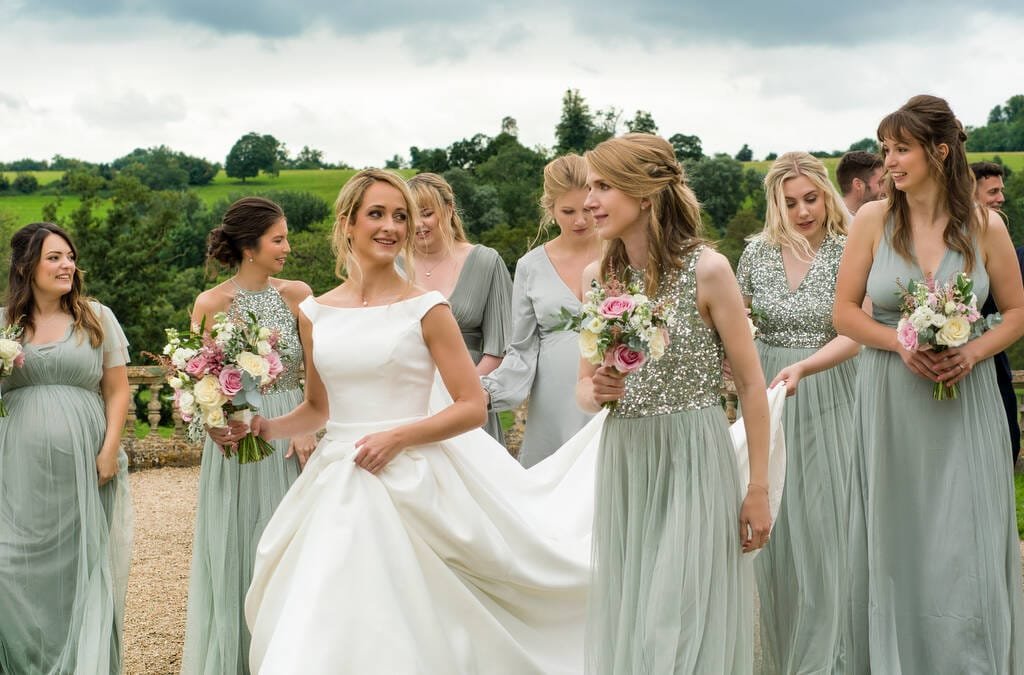The Timeless Elegance of Wedding Gowns. Top Designers, and Wedding Photography
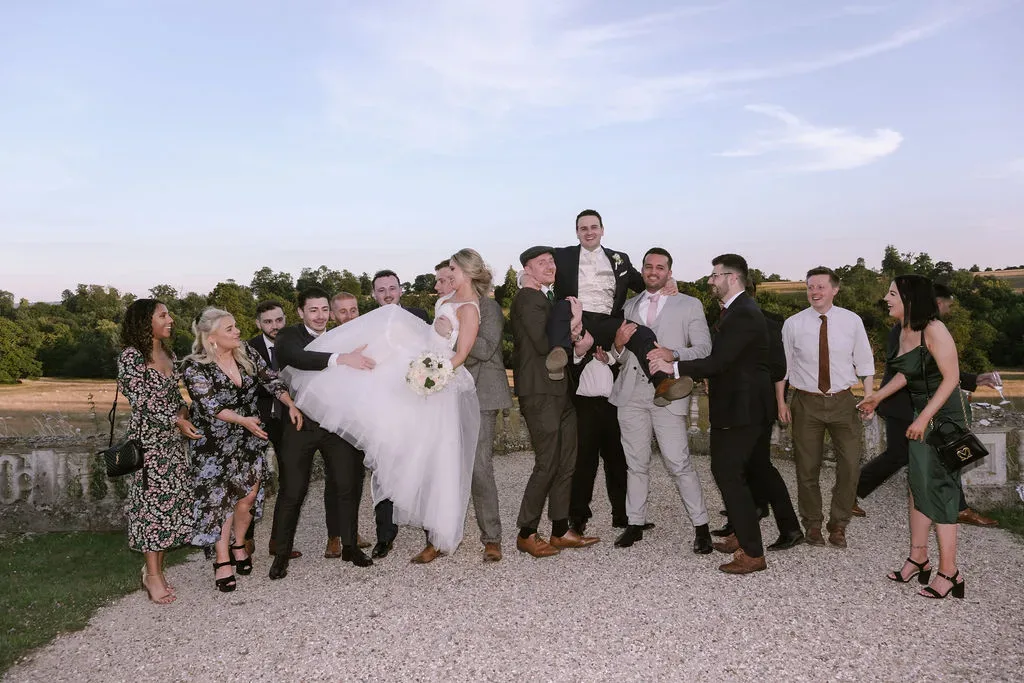
Introduction
A wedding gown is more than just a dress; it is a symbol of love, tradition, and personal style. From the intricate lace of a vintage-inspired gown to the sleek lines of a modern silhouette, wedding dresses have evolved over centuries, reflecting cultural shifts and fashion trends. This article delves into the rich history of wedding gowns, highlights some of the top designers in the industry, and underscores the importance of capturing these beautiful creations through wedding photography.
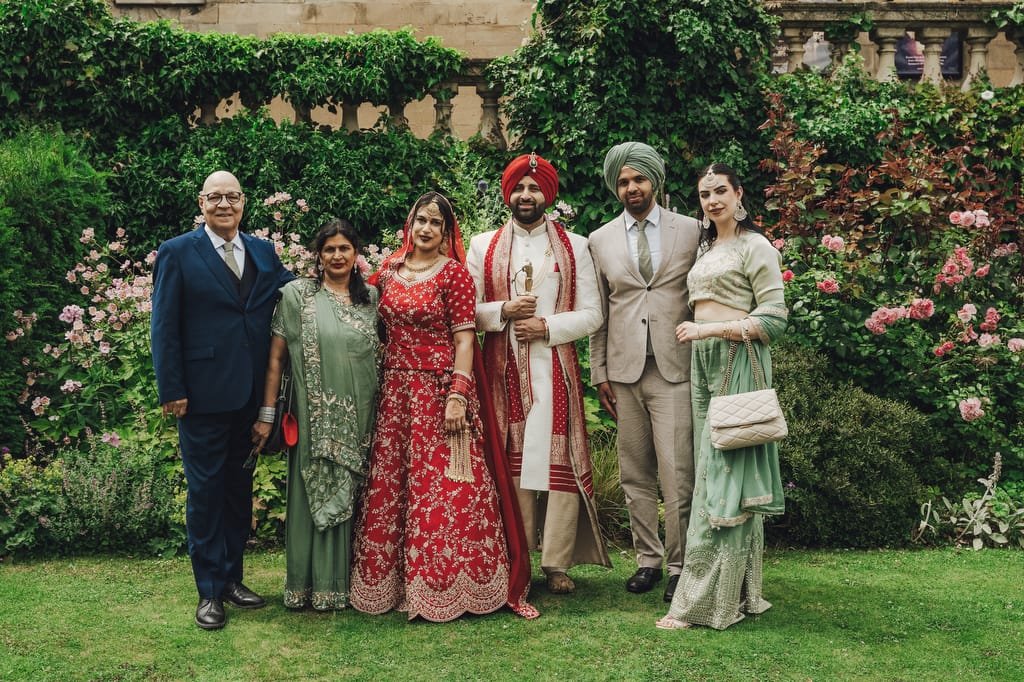
The Evolution of Wedding Gowns
The tradition of wearing a special dress for one’s wedding dates back to ancient times. In ancient Rome, brides wore long, flowing robes in shades of yellow, symbolizing the flame of Vesta, the goddess of hearth and home. During the Middle Ages, brides of noble birth often wore rich colors and luxurious fabrics to display their family’s wealth and social status.
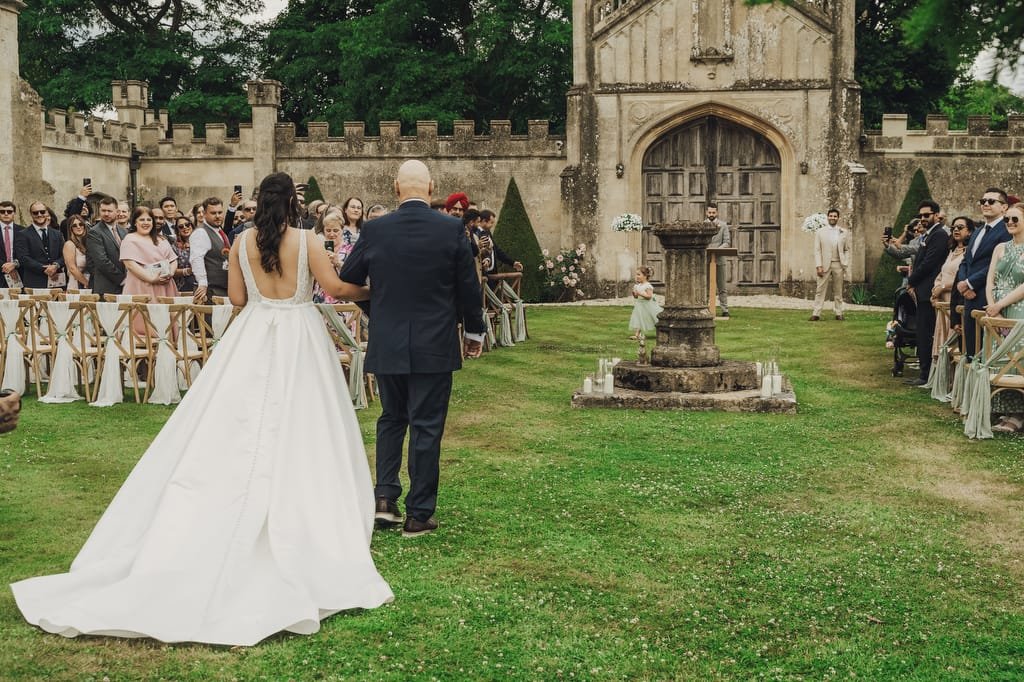
The iconic white wedding dress became popular in the 19th century, thanks to Queen Victoria, who wore a white gown for her wedding to Prince Albert in 1840. This choice was unconventional at the time, as white was traditionally associated with mourning. However, Queen Victoria’s dress set a new trend, and white became the color of choice for brides, symbolizing purity and innocence.

The History of Wedding Gowns
The history of wedding gowns is a fascinating journey through time, reflecting cultural, social, and fashion trends. Let’s delve deeper into the evolution of this iconic garment.
Ancient Times
The tradition of wearing a special dress for one’s wedding dates back to ancient civilizations. In ancient Rome, brides wore long, flowing robes in shades of yellow, symbolizing the flame of Vesta, the goddess of hearth and home¹. These robes were often adorned with a veil and a wreath of flowers, signifying purity and fertility.
Medieval and Renaissance Periods
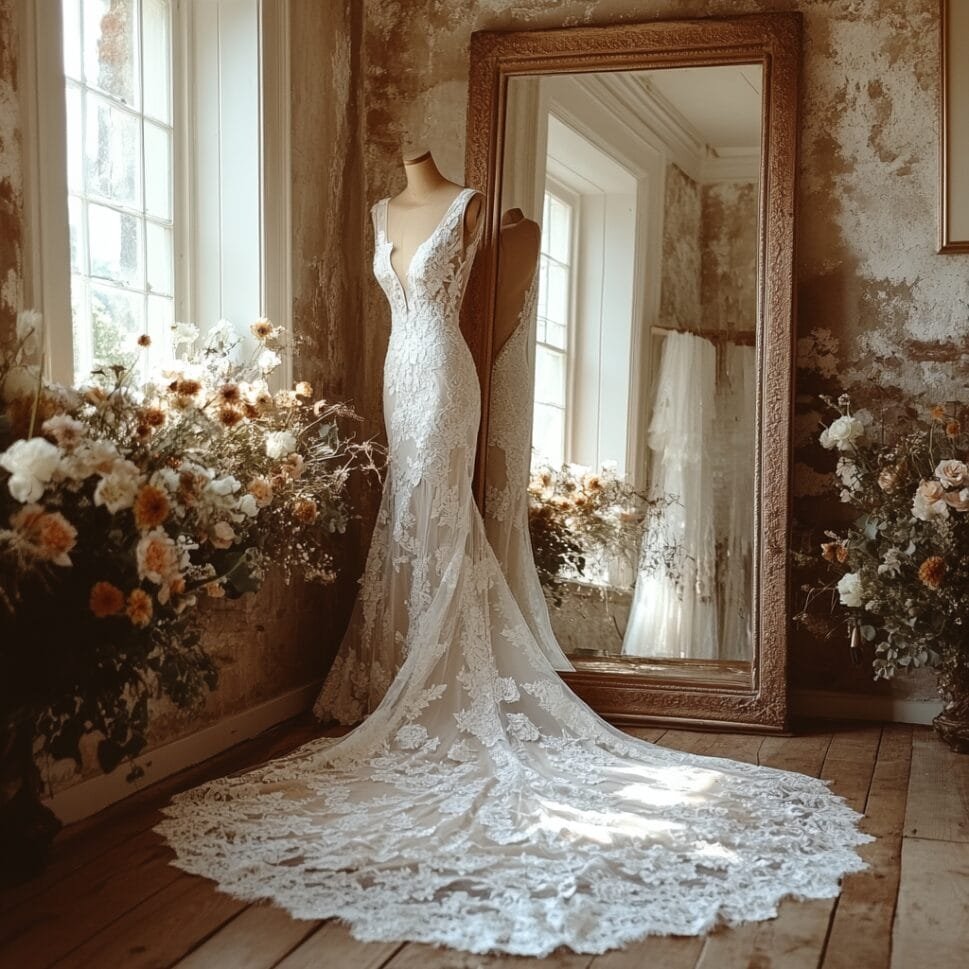
During the Middle Ages, weddings were more about political alliances and social status than love. Brides of noble birth often wore rich colors and luxurious fabrics to display their family’s wealth and social standing¹. Fabrics like velvet, silk, and fur were common, and the dresses were often adorned with precious stones and elaborate embroidery.
In the Renaissance period, the focus on opulence continued. Brides wore gowns made of heavy brocades and velvets, often in deep, rich colors like burgundy, green, and gold. The dresses were designed to showcase the bride’s family’s wealth and status, with intricate detailing and luxurious fabrics¹.
The 18th and 19th Centuries
The 18th century saw a shift towards lighter fabrics and more delicate designs. Brides began to wear gowns made of silk and satin, often in pastel colors. The dresses featured elaborate embroidery, lace, and ribbons, reflecting the Rococo style of the time¹.
The iconic white wedding dress became popular in the 19th century, thanks to Queen Victoria, who wore a white gown for her wedding to Prince Albert in 1840¹. This choice was unconventional at the time, as white was traditionally associated with mourning. However, Queen Victoria’s dress set a new trend, and white became the color of choice for brides, symbolizing purity and innocence¹.
The Early 20th Century
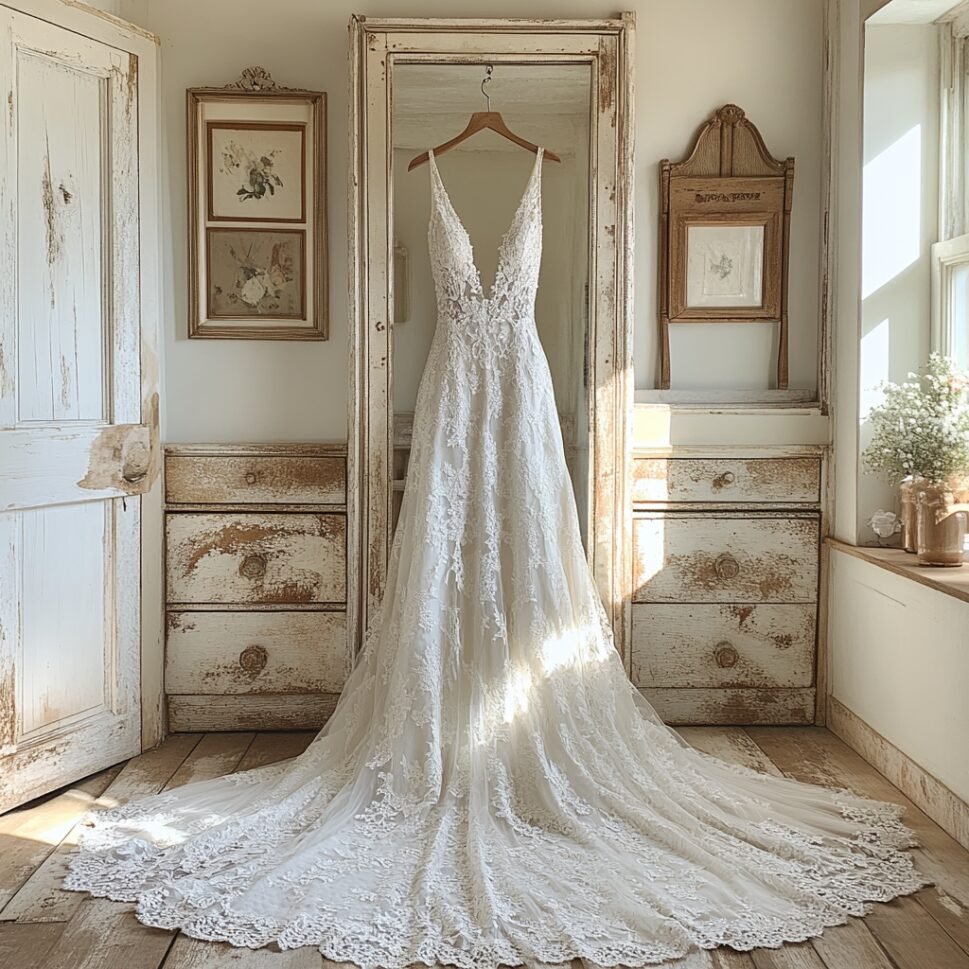
The early 20th century brought significant changes to bridal fashion. The Edwardian era saw the introduction of the S-shaped corset, which created an hourglass figure. Wedding gowns featured high necklines, long sleeves, and elaborate lace detailing².
The 1920s marked a dramatic shift in bridal fashion, influenced by the flapper style. Gowns became more streamlined and less restrictive, with dropped waists, shorter hemlines, and intricate beadwork². The use of luxurious fabrics like silk and satin continued, and brides often wore elaborate headpieces and veils.
The Mid-20th Century
The mid-20th century saw a return to more traditional styles. The 1940s and 1950s were characterized by full skirts, fitted bodices, and long trains. Lace and tulle were popular materials, and gowns often featured intricate detailing and embellishments².
The 1960s and 1970s brought a more relaxed and bohemian approach to bridal fashion. Brides began to experiment with different styles, including shorter hemlines, empire waists, and flowing, ethereal designs². The use of natural fabrics and floral embellishments became popular, reflecting the free-spirited ethos of the time.
The Late 20th and Early 21st Centuries
The late 20th century saw a resurgence of traditional styles, with a focus on elegance and sophistication. Designers like Vera Wang and Monique Lhuillier became household names, known for their luxurious fabrics, intricate detailing, and timeless designs².
In the early 21st century, bridal fashion continued to evolve, with a focus on individuality and personal style. Brides began to embrace a wide range of styles, from minimalist and modern to vintage-inspired and bohemian². The rise of sustainable fashion also influenced bridal wear, with many designers offering eco-friendly options made from organic and recycled materials².
Conclusion
The history of wedding gowns is a testament to the ever-changing nature of fashion and culture. From the opulent gowns of the medieval period to the minimalist designs of the modern era, wedding dresses have evolved to reflect the values and aesthetics of their time. Today, brides have more options than ever before, allowing them to choose a gown that truly reflects their personal style and the significance of their special day.
Iconic Celebrity Wedding Gowns
- Grace Kelly: Grace Kelly’s wedding dress, designed by Helen Rose, is one of the most iconic bridal gowns of all time. The dress featured a high neckline, long sleeves, and a full skirt made of silk taffeta and lace. This timeless design has inspired countless brides and continues to be a reference point for classic elegance¹.
- Princess Diana: Princess Diana’s wedding dress, designed by David and Elizabeth Emanuel, was a sensation in 1981. The gown featured a dramatic 25-foot train, puffed sleeves, and intricate lace detailing. Diana’s dress set a new standard for opulence and grandeur in bridal fashion¹.
- Kate Middleton: Kate Middleton’s wedding dress, designed by Sarah Burton for Alexander McQueen, combined traditional and modern elements. The gown featured a lace bodice, long sleeves, and a full skirt, drawing comparisons to Grace Kelly’s iconic dress. Kate’s choice has influenced many brides to opt for lace and classic silhouettes¹.
- Meghan Markle: Meghan Markle’s wedding dress, designed by Clare Waight Keller for Givenchy, was celebrated for its simplicity and elegance. The gown featured a boat neckline, three-quarter sleeves, and a sleek silhouette. Meghan’s minimalist approach has inspired a trend towards understated and sophisticated bridal wear¹.
Setting Trends
Celebrities often set new trends in bridal fashion, with their choices influencing what is considered stylish and desirable:
- Non-Traditional Colors: Celebrities like Gwen Stefani and Jessica Biel have worn non-traditional colors for their weddings, such as pink and dip-dyed gowns. This has encouraged more brides to experiment with colors beyond the traditional white².
- Unique Silhouettes: Celebrities like Solange Knowles, who wore a backless jumpsuit for her wedding, have pushed the boundaries of traditional bridal wear. This has led to a rise in unconventional silhouettes and styles².
- Sustainable Fashion: With increasing awareness of environmental issues, some celebrities have chosen sustainable and eco-friendly wedding gowns. This has influenced the bridal industry to offer more sustainable options².
Influence of Social Media
Social media has amplified the impact of celebrity weddings, allowing brides-to-be to see and be inspired by celebrity bridal fashion in real-time:
- Instant Inspiration: Platforms like Instagram and Pinterest provide instant access to celebrity wedding photos, allowing brides to draw inspiration from their favorite stars³.
- Designer Collaborations: Many designers collaborate with celebrities to create custom wedding gowns, which are then showcased on social media. This not only boosts the designer’s profile but also sets new trends in bridal fashion³.
Celebrity culture continues to play a significant role in shaping bridal fashion. From iconic wedding gowns to setting new trends, celebrities influence the choices of brides around the world. Whether it’s through their bold fashion statements or their embrace of sustainability, celebrities inspire brides to express their personal style and make their wedding day truly unique.
Cultural Traditions and Modern Trends
Wedding gown traditions vary widely across cultures. In China, brides often wear red, a color symbolizing good luck and prosperity. In India, brides typically don vibrant saris adorned with intricate embroidery and beadwork. In Japan, brides may wear a white kimono for the ceremony and change into a red one for the reception, symbolizing happiness and good fortune.
Modern brides have a plethora of options, from traditional gowns to contemporary designs. Some opt for minimalist styles with clean lines and simple fabrics, while others choose elaborate dresses with layers of tulle, lace, and beading. The rise of sustainable fashion has also influenced bridal wear, with many designers offering eco-friendly options made from organic and recycled materials.
Top Wedding Gown Designers
The world of bridal fashion is graced by numerous talented designers, each bringing their unique vision to the art of wedding gown creation. Here are a few of the most renowned names in the industry:
- Vera Wang: Known for her innovative designs and luxurious fabrics, Vera Wang has been a leading name in bridal fashion for decades. Her gowns often feature bold details, such as oversized bows, intricate lace, and dramatic silhouettes.
- Pnina Tornai: A favorite on the TV show “Say Yes to the Dress,” Pnina Tornai is celebrated for her glamorous and opulent designs. Her gowns are often adorned with crystals, lace, and intricate beadwork, making them perfect for brides who want to make a statement.
- Monique Lhuillier: Monique Lhuillier’s designs are known for their romantic and ethereal qualities. Her gowns often feature delicate lace, flowing tulle, and soft, feminine silhouettes, making them ideal for brides seeking a timeless and elegant look.
- Galia Lahav: Galia Lahav’s haute couture gowns are the epitome of luxury and sophistication. Known for their impeccable fit and exquisite detailing, her dresses often feature dramatic trains, intricate embroidery, and daring necklines.
- Hayley Paige: Hayley Paige’s designs are playful and whimsical, often incorporating unique elements such as colorful embroidery, sparkling sequins, and unexpected silhouettes. Her gowns are perfect for brides who want to showcase their fun and adventurous side.
The Importance of Wedding Photography
While the wedding gown is a central element of a bride’s special day, capturing its beauty through wedding photography is equally important. Photographs serve as a lasting reminder of the joy and emotion of the wedding day, and they allow brides to relive the moment they first put on their gown, walked down the aisle, and danced the night away.
Professional wedding photographers understand the significance of the gown and take great care to capture its details. From close-up shots of the intricate lace and beadwork to full-length portraits that showcase the gown’s silhouette, these images highlight the craftsmanship and beauty of the dress. Additionally, candid shots of the bride in her gown, whether she’s laughing with her bridesmaids or sharing a quiet moment with her partner, add a personal and emotional touch to the wedding album.
Conclusion
Wedding gowns are a beautiful blend of tradition, personal style, and artistic expression. Whether a bride chooses a classic white dress or a bold, contemporary design, her gown is a reflection of her individuality and the love she shares with her partner. By understanding the history and cultural significance of wedding gowns, exploring the creations of top designers, and appreciating the importance of wedding photography, brides can make informed choices that will enhance their special day and create lasting memories.
Incorporating the artistry of wedding photography ensures that the beauty and significance of the wedding gown are preserved for generations to come. After all, a picture is worth a thousand words, and the right photograph can capture the essence of a bride’s joy and the timeless elegance of her wedding gown.

